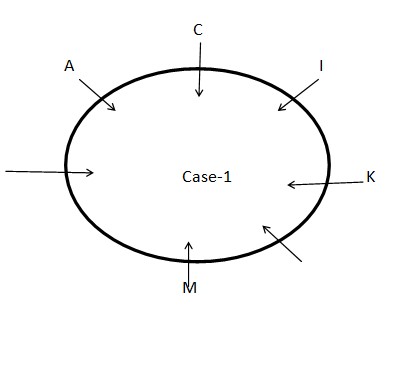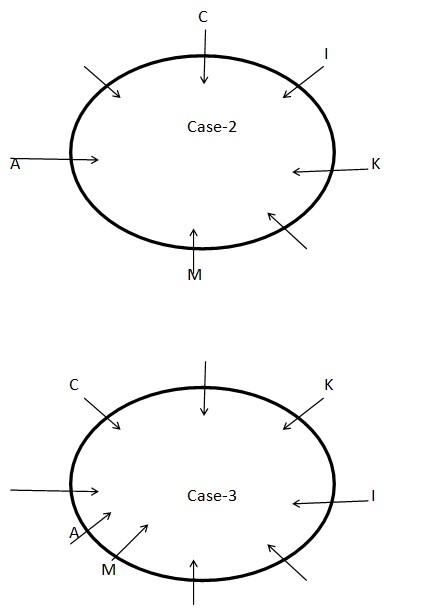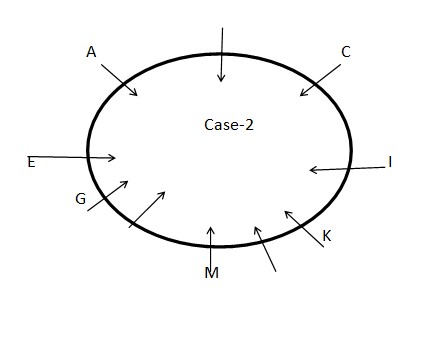Question
If L sits second to the left of I then how many seats
are between L and E when counted from the right of E? Study the following information carefully and answer the questions given below: A certain number of persons are sitting around the circular table. All of them are facing towards the center. Three persons sit between A and K who sits second to the left of C. E sits to the immediate left of G who sits second to the left of M. M sits third to the left of I who sits an immediate neighbour of K. Both E and A sit adjacent to each other. The number of persons sits between G and K is one less than the number of persons sits between K and E when counted from the right of both G and K respectively. At least one person sits between C and E when counted from the right of C.Solution
STEP I: M sits third to the left of I who sits an immediate neighbour of K. Three persons sit between A and K who sits second to the left of C. As per these statements, we can say that there are three possible cases and the arrangement will look like this: 
 STEP II: E sits to the immediate left of G who sits second to the left of M. Both E and A sit adjacent to each other. The number of persons sits between G and K is one less than the number of persons sits between K and E when counted from the right of both G and K respectively. At least one person sits between C and E when counted from the right of C. As per these statements, CASE I and CASE III get eliminated and we continue with CASE II and the final arrangement will look like this:
STEP II: E sits to the immediate left of G who sits second to the left of M. Both E and A sit adjacent to each other. The number of persons sits between G and K is one less than the number of persons sits between K and E when counted from the right of both G and K respectively. At least one person sits between C and E when counted from the right of C. As per these statements, CASE I and CASE III get eliminated and we continue with CASE II and the final arrangement will look like this: 
Test cross ratio for the monohybrid is
Kufri Pukhraj, Kufri Sheetman and Kufri Alankar are varieties of
Vetiver is primarily propagated through?
The type of activity of Bacillus Megaterium bioinoculant in soil is
Element mobile in plant but immobile in soil is
Which among the following crop has highest production in 2015-16?
India Meteorological Department has been using long range or seasonal forecast for the SW monsoon rainfall during June - September since
Given below are two statements, one is labelled as Assertion A and the other is labelled as Reason R
Assertion A: Sodic or alkali soils can b...
The "c" in "cGMP" stands for:
Micro irrigation _______ has emerged as a tool for effective management of resources which save water.
Relevant for Exams:


